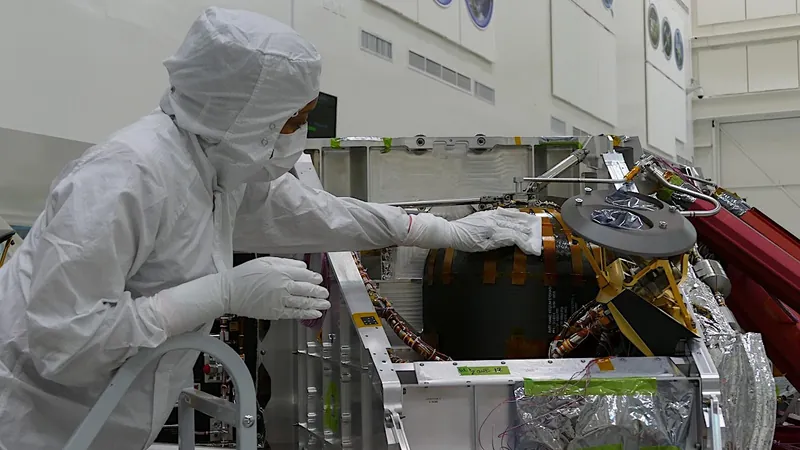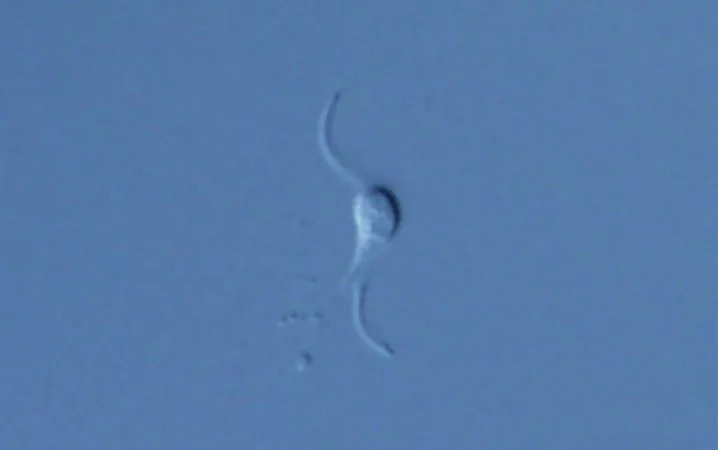
Breakthrough Discovery on Mars 2020: New Microbes Could Revolutionize Antimicrobial Applications!
2025-01-03
Author: Yu
Breakthrough Discovery on Mars 2020
In a thrilling discovery during the microbial surveillance of the Mars 2020 spacecraft assembly facility, scientists have uncovered two novel strains of bacteria with the potential to produce lasso peptides—molecules that could usher in a new era of antimicrobial treatments and biotechnological applications.
The Two Strains
The two strains, identified as 179-C4-2-HS and 179-J1A1-HS, were collected from cleanroom floors specifically designed to maintain the integrity of the Mars 2020 mission. Using advanced molecular and genomic techniques, researchers characterized these strains alongside one extracted from an Agave plant and another from wheat-associated soil. Remarkably, the four strains displayed over 99.2% similarity in their 16S rRNA gene sequences, distinguishing them as an entirely new species: Neobacillus driksii.
Adaptability and Potential Applications
N. driksii exhibits impressive adaptability, thriving in temperatures from 4°C to 45°C, with the ability to withstand a pH range of 6.0 to 9.5 and salt concentrations between 0.5% and 5%. This resilience suggests these microbes are well-suited for diverse and challenging environments, making them ideal candidates for various industrial applications.
Genomic Potential
What makes N. driksii particularly exciting is its genomic holding—its genes encode pathways that allow for the production of lasso peptides, which have shown extraordinary promise in antimicrobial defense and enzyme inhibition. This discovery aligns perfectly with the growing need for innovative antimicrobial agents in sectors such as healthcare, pharmaceuticals, semiconductors, and even aeronautical industries—all of which require stringent cleanroom conditions to avoid contamination.
Bioactive Gene Clusters
Moreover, the analysis revealed the presence of bioactive gene clusters capable of producing nicotianamine-like siderophores. These compounds are vital for bioremediation efforts, helping to remove heavy metals from polluted environments, enhancing plant growth by improving iron uptake, and potentially addressing medical iron overload conditions.
Broader Implications
The implications of this discovery could extend far beyond what we currently understand about space and microbial ecology. As researchers continue to investigate the capabilities of N. driksii and similar novel strains, we may find groundbreaking solutions to some of humanity's pressing challenges, including the fight against antibiotic-resistant bacteria—a crisis that is looming ever closer.
Conclusion
This astonishing research not only expands our knowledge of microbial life that may exist beyond Earth but also paves the way for significant advancements in biotechnology right here on our planet. Stay tuned as we uncover more secrets from the universe and the microbes that inhabit it!
Future Prospects
The revelation of Neobacillus driksii from the cleanroom of a Mars mission hints at a future where space exploration and microbial science intersect, promising exciting development opportunities that could revolutionize multiple industries.


 Brasil (PT)
Brasil (PT)
 Canada (EN)
Canada (EN)
 Chile (ES)
Chile (ES)
 Česko (CS)
Česko (CS)
 대한민국 (KO)
대한민국 (KO)
 España (ES)
España (ES)
 France (FR)
France (FR)
 Hong Kong (EN)
Hong Kong (EN)
 Italia (IT)
Italia (IT)
 日本 (JA)
日本 (JA)
 Magyarország (HU)
Magyarország (HU)
 Norge (NO)
Norge (NO)
 Polska (PL)
Polska (PL)
 Schweiz (DE)
Schweiz (DE)
 Singapore (EN)
Singapore (EN)
 Sverige (SV)
Sverige (SV)
 Suomi (FI)
Suomi (FI)
 Türkiye (TR)
Türkiye (TR)
 الإمارات العربية المتحدة (AR)
الإمارات العربية المتحدة (AR)